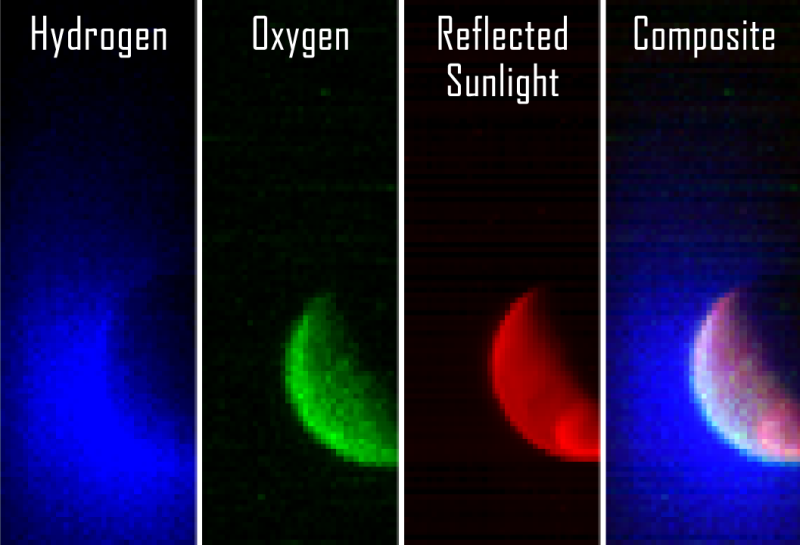MAVEN at Mars

Explanation:
Launched on November 18, 2013, the MAVEN
(
Mars
Atmosphere and Volatile EvolutioN)
spacecraft completed its interplanetary voyage
September 21, captured into a wide, elliptical orbit around Mars.
MAVEN's imaging ultraviolet spectrograph has already begun
its planned exploration of the Red Planet's upper atmosphere,
acquiring
this image data from an altitude of 36,500 kilometers.
In false color, the three ultraviolet wavelength bands
show light reflected from atomic hydrogen (in blue), atomic oxygen (in green)
and the planet's surface (in red).
Low mass atomic hydrogen is seen to extend thousands of kilometers
into space, with the cloud of more massive oxygen atoms
held closer by Mars' gravity.
Both are by products of the breakdown of water and
carbon dioxide in Mars' atmosphere and the MAVEN data can
be used to determine the rate of water loss over time.
In fact, MAVEN is
the first mission dedicated
to exploring Mars' tenuous upper atmosphere, ionosphere and
interactions with the Sun and solar wind.
But the most recent addition to the
fleet
of spacecraft from planet Earth now in
martian orbit is MOM.
Authors & editors:
Robert Nemiroff
(MTU) &
Jerry Bonnell
(USRA)
NASA Web Site Statements, Warnings,
and Disclaimers
NASA Official: Jay Norris.
Specific
rights apply.
A service of:
LHEA at
NASA /
GSFC
& Michigan Tech. U.

